Parents often ask themselves the question: “When should I start teaching my child? From what age? From birth!
You should start working with a newborn baby as early as possible. In the first months these will be the simplest activities. It is very useful to turn on classical music several times a day for 5-10 minutes; classes with a child in a special pool in groups for newborns will be useful for physical development. And of course, talk to your baby as much as possible when he is awake, during feeding. Do gymnastics with him, give him a light massage.
Education for the development and needs of a child with disabilities. And to prevent possible future failures in school education. The Regulations establish the conditions of organization early development child, aimed at stimulating the psychomotor and social development of the child as soon as a disability is identified.
For schooling, hereinafter referred to as "early support", including the qualifications required by early supporters, as well as forms of cooperation with the child's family. Early support can be organized in kindergarten and elementary school, including.
No need to wait the child will go to kindergarten, and there they will work with him using developmental methods. It’s too late to start classes at 3 years old, because... Brain development occurs most intensively from birth to 3 years. Already at 6-8 months it’s time to think about special developmental activities. They should be carried out in the form of a game, it is necessary to often change the types of activities. For emotional development It is very important for the child that the activities are enjoyable and not carried out against their wishes. In recent years, many developmental methods for young children have appeared. They can be used both in special development centers and at home by parents. Developmental centers accept children aged 6 months to 5 years. There are many developmental techniques, but let’s look at the most popular ones:
Pedagogical, including specialized clinics, if they have the opportunity to fulfill the indications contained in the opinion on the need for early child development, in particular, to have didactic aids and equipment needed for early support.
Initially the care was for two children, but in subsequent years their number grew. Children participate in therapy before classes begin. Family therapy and support should begin as soon as possible after parents have received information about their child's disability. The youngest participant at the beginning of classes was 9 months. The idea of early support for child development is associated with the need to use plasticity and receptivity nervous system to compensate for the disorder.
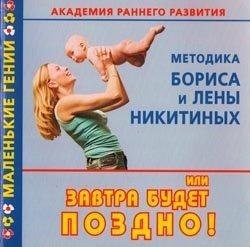 Developmental methodology of the Nikitins.
Developmental methodology of the Nikitins.
One of the first developmental methods in Russia. You can use it yourself from a very early age for your baby. The essence of the technique is that on the walls of the room you need to hang various teaching aids: world map, alphabet, numbers, etc. An important component of the methodology is sports and hardening. The main thing in this technique is freedom. Engage with the child - when he wants it, exercise - when the child wants it. For absolutely small child who only crawls and cannot walk - moves freely around the apartment. You only need to ensure compliance with the rules of hygiene and safety of the child. And of course, creative activities are necessary - modeling, music, drawing. This technique is suitable for all children and does not require large financial costs.
Early child development may include a child with an opinion. On the need for early child development in a psychological and pedagogical outpatient clinic. The team consists of people who are ready to work with young children with psychomotor development disorders.
The choice of therapists working with a child depends on his or her needs and is not a one-time decision - if the child's needs change, therapists can be changed at any time during therapy. The team's tasks include, but are not limited to: And a schedule of early support and support for the child’s family.
Glen Doman's method.
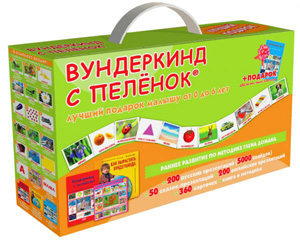 This is perhaps one of the most popular methods of developing children. The methodology is based on the theory that mental stress on a child in the first year of his life gives best results for the development of intelligence in the future. From birth, the child is given movement exercises to speed up his physical development. From 3-4 months, the child is shown cards with words, images, numbers, examples, etc. 3 times a day. If you have a lot of free time, you can make your own activity cards. Widely available for sale as ready-made kits cards for classes, and cards of a specific topic. Typically, the kits include cards: wild animals, insects, water inhabitants, vegetables, fruits, berries, professions, nature, pets, birds, transport, shape and color, flowers, first english words, musical instruments, cards for reading and counting, clothing, dishes and others. The difficult thing about using this technique is that it must be strictly followed. It takes a significant amount of time and requires systematic training. This method is difficult for mobile and active children, because... they quickly get bored of looking at the same cards every day.
This is perhaps one of the most popular methods of developing children. The methodology is based on the theory that mental stress on a child in the first year of his life gives best results for the development of intelligence in the future. From birth, the child is given movement exercises to speed up his physical development. From 3-4 months, the child is shown cards with words, images, numbers, examples, etc. 3 times a day. If you have a lot of free time, you can make your own activity cards. Widely available for sale as ready-made kits cards for classes, and cards of a specific topic. Typically, the kits include cards: wild animals, insects, water inhabitants, vegetables, fruits, berries, professions, nature, pets, birds, transport, shape and color, flowers, first english words, musical instruments, cards for reading and counting, clothing, dishes and others. The difficult thing about using this technique is that it must be strictly followed. It takes a significant amount of time and requires systematic training. This method is difficult for mobile and active children, because... they quickly get bored of looking at the same cards every day.
Taking into account measures to support the child's family in implementing the program, coordinating the activities of child care professionals and assessing the child's progress. The team's goal is to stimulate and stimulate the child's motor, cognitive, emotional and social development.
The team provides comprehensive assistance to the child and his family. Stimulating child development when the activity is appropriately matched to the difficulty of the small fee. Collaborate with organizations, care and education providers that provide child care. The objectives of interaction are both the exchange of experience and joint planning of education at this stage of the child’s life.
Maria Montessori's method.
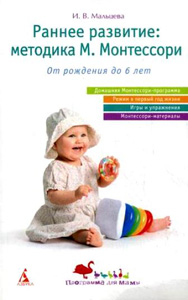 In development centers, the Maria Montessori method is most widely used. This technique is known as “environmental”, because classes must take place in a specially prepared and created environment for their conduct. Each child chooses what and when to do. The environment is broken down into thematic zones. In the “practical life” zone, the child acquires everyday skills - learns to wash, iron, cook, etc. In the zone of “sensory development”, he gains knowledge about the world around him. In the “mathematics” zone, he gains knowledge about the number of objects, mathematical operations with them, numbers and signs. In the “language” zone, the child gains writing and reading skills. In the “space” zone, the child receives knowledge of history, culture, phenomena and objects. One of the differences between the Montessori method is that during classes, children in groups are not divided by age. At the same time, children of different ages can learn from each other. According to this method, the adult does not work with the child, but only helps him in his development and guides him. The Montessori system is not suitable for withdrawn children, because... According to the methodology, the child should be helped only if he himself asked for help. A withdrawn child may not make a request, but will simply sit and watch.
In development centers, the Maria Montessori method is most widely used. This technique is known as “environmental”, because classes must take place in a specially prepared and created environment for their conduct. Each child chooses what and when to do. The environment is broken down into thematic zones. In the “practical life” zone, the child acquires everyday skills - learns to wash, iron, cook, etc. In the zone of “sensory development”, he gains knowledge about the world around him. In the “mathematics” zone, he gains knowledge about the number of objects, mathematical operations with them, numbers and signs. In the “language” zone, the child gains writing and reading skills. In the “space” zone, the child receives knowledge of history, culture, phenomena and objects. One of the differences between the Montessori method is that during classes, children in groups are not divided by age. At the same time, children of different ages can learn from each other. According to this method, the adult does not work with the child, but only helps him in his development and guides him. The Montessori system is not suitable for withdrawn children, because... According to the methodology, the child should be helped only if he himself asked for help. A withdrawn child may not make a request, but will simply sit and watch.
Support psychological family. Therapists who manage the child based on a detailed diagnosis develop. Together with the child's family, the individual program, including family support measures, coordinates the activities of the professionals working with the child and evaluates the child's progress.
The scope of early child support activities may include: motor development, multisensory stimulation, speech and language development, vision improvement, hearing, self-care and environmental efficiency, communication. With the environment and functioning in relationships with others.
Methodology of Nikolai Zaitsev.
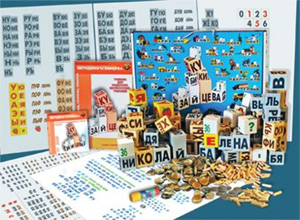 The essence of this technique is that the child learns to put words together not from syllables, but from warehouses. The structure can be anything - it can be a consonant with a vowel, or a consonant with a hard sign, or it can be just one letter. Using the warehouses, which are located on separate sides of Zaitsev's cubes, the child learns to form words. The cubes vary in color and shape and make different sounds. They help you learn to read from the very first lessons. Children who do not speak well yet learn to speak and read within a few months of lessons. When practicing, it is worth considering the age of the child - with the little ones the main emphasis is on playing with cubes, older children can study with cubes and tables. In addition to tables and cubes, the method presents various teaching aids on the Russian language, mathematics, the world around us, and others. This technique is suitable for children from 2-2.5 years old and requires systematic training.
The essence of this technique is that the child learns to put words together not from syllables, but from warehouses. The structure can be anything - it can be a consonant with a vowel, or a consonant with a hard sign, or it can be just one letter. Using the warehouses, which are located on separate sides of Zaitsev's cubes, the child learns to form words. The cubes vary in color and shape and make different sounds. They help you learn to read from the very first lessons. Children who do not speak well yet learn to speak and read within a few months of lessons. When practicing, it is worth considering the age of the child - with the little ones the main emphasis is on playing with cubes, older children can study with cubes and tables. In addition to tables and cubes, the method presents various teaching aids on the Russian language, mathematics, the world around us, and others. This technique is suitable for children from 2-2.5 years old and requires systematic training.
The correct diagnosis, according to Dr. Radoslav Piotrovic, an outstanding general practitioner, is the basis for successful therapy. It recognizes the child's current state of development, describes his functioning in the environment, and predicts future development. A pedagogical diagnosis requires an interdisciplinary diagnosis. The study of the child should be psychological, pedagogical, medical and social. In order for a pedagogical diagnosis to be complete, disorder data must cover each of these planes.
This approach requires the therapist to work with child care professionals in a variety of settings. The specifics of work at an early stage of development require an in-depth analysis of the child’s situation with an individual approach to his problems and the reasons for their existence. The therapist must diagnose each case, develop a family support program and analyze the effectiveness of assistance. Every child with early development support is an example.
One lesson in a development center (early development center) usually lasts from 20 minutes for the youngest children to 1.5 hours for children 4-5 years old. During classes, children dance, sing, do crafts, do gymnastics, and learn letters and numbers. Teachers work with children on the development of speech and logic. Available for kids finger games. But even if you study at a development center 3-4 times a week, you cannot count on good result. Activities with the child at home are necessary. All developmental methods are designed for daily practice - this is the only way to achieve sustainable results. When attending classes, you will be given the basics of the methodology, taught how to work with a child and what to do. As your baby grows, you will learn more and more educational activities and games. And, of course, communication with other children is very important for a child. It is worth giving preference to centers where 2-3 methods are used. Before starting classes, you need to come to the center and see how children are studying in groups - if you see satisfied, happy faces, then come here!!!
Based on the diagnosis, a therapeutic action plan is created that is the answer. What do we teach a child from birth? Experience the world from the first days of life. And the task of therapists is to help discover reality using its capabilities. The consequences of disability early in life are cognitive difficulties that can be overcome through specialized care.
A child learns about the world through feelings and mental thinking processes. Effective learning is, first of all, experience through action and initiative. And repetition. The main form of a child's introduction to the world is fun and in early support it is one of the most attractive.
Children who have been taught from a very early age adapt more easily to kindergarten and school, and it is easier for them to accept educational material given by a teacher at school, they are more diligent and attentive, they know how to work in a group or class, they are more willing to fulfill the requirements of teachers, and they strive to acquire new knowledge. By working with your child, you will learn to understand him better, and the child will know that you love him and you always have time for him.
For the working method. It is used to develop imagination, motor skills both large and small, and expand passive vocabulary. And active, articulation exercises and communication skills. Team work is coordinated by the director of a kindergarten, school, center or clinic or someone who is responsible for another type of preschool education or authorized by the supervisor or teacher, as appropriate.
The team describes in detail the activities carried out within the individual early support program. Early support classes are organized in a range of 4 to 8 hours per month. Depending on the psychophysical capabilities and needs of the child. Early support classes are conducted individually with the child and his family.
Relatively recently, a new term was born - “intensive parenting”. In essence, this is an improved “motherhood 2.0”, where women elevate their new status as mothers into a lifestyle and even a profession. They try to be more competent in all matters related to children - from health to education.
For such perfectionist parents, early child development methods are the main platform for vigorous activity.
For children under 3 years of age, early support classes can be run in groups of two or three children and their families. The maximum number of hours for one child is 8 hours per month. The number of classes is specified along with the family. It happens that a child is cared for by various specialized centers, and the number of therapeutic activities exceeds his potential.
Individual therapy is the leading form of therapy if you do not see an indication. The peer group most often provides nursery, kindergarten to which the child belongs. We always try to check the child's progress and ability to cooperate in the group by organizing integration activities in small subgroups.
However, the issue of the intensity and effectiveness of early development causes a lot of controversy among experts in the field of psychology and education. Some experts are sure that the sooner you start working with your child to develop certain skills, the faster he will acquire the abilities and skills that are important for a full life. Numerous early learning and child development systems are built on this principle. Other experts argue that early development is nothing more than a tool for satisfying “parental perfectionism” and pumping out money, one of the facets of the childhood industry.
Maria Montessori Method
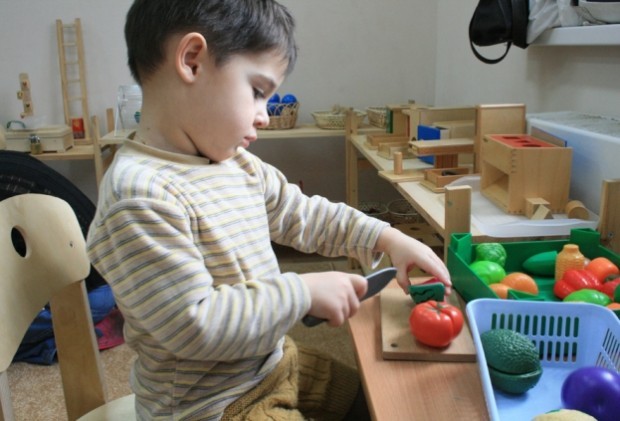
The basis of Maria Montessori's teaching methodology is to help the child demonstrate self-learning skills in an environment specially created for these purposes.
The method is based on an individual approach to development from the first days of life in order to reveal all the unique potential inherent in each child.
Early support classes, especially with children under 3 years of age, can also be provided in the family home. The placement of early support classes is determined by the director of the respective preschool, school, center or clinic, or person administering another type of preschool education, in agreement with the child's parents.
Thanks to the rich educational institutions and private rooms. Exceptions are children who have no chance of leaving their home or children who have lost their sense of safety in an unfamiliar place. The team works with the child's family in particular. And correcting the correct responses to these behaviors.
The system consists of three parts: child, environment, teacher. At its center is a child. A special environment is created around him in which he lives and learns independently.
The child is surrounded by various objects that help him experiment independently and learn freely the world around us. Adults act as wise assistants, whose task is to guide and create the necessary conditions.
And use appropriate learning resources and equipment when working with your child. Supporting the family of a disabled child has a wide range of actions: overcoming fear of disability, strengthening mutual trust between child and parents, recognition of child development needs, coordination of therapeutic interventions, solving educational problems, development of broader family relations, crisis intervention - parent education.
Family support - the right word for family therapy. You cannot impose solutions, impose a way to cope with the child. Assuming that the parent knows better, the child helps in using such forms of work with the child that will be used throughout the family. It should be added that children's activities are always carried out in the presence of a parent.
The postulate of the Montessori system is observation of the child and non-interference in his affairs unless the child himself asks for it.
There are special Montessori classes.
This class is a room divided into thematic zones:
- zone of real (practical) life;
- zone of sensory development;
- mathematics zone;
- language zone;
- space zone.
Child age:
The classical Montessori system involves classes with children over 2.5-3 years old. However, it is believed that the classes will be interesting to a child starting from 1 year.
The above information is a representation of labor laws. For early support of children's and family development and their practical interpretation by our team. We are still improving our workshop. These assumptions make our work dynamic.
Analysis of the specificity of childhood disorders and adolescence suggests that it may be an almost endless set of problems arising from various configurations, the interrelationship of many conditions - biological, genetic and neurological, familial and psychosocial, sociological and cultural.
In Montessori centers, it is customary to divide children by age into 2 groups from 1 year to 6 years and from 7 to 12 years. This division of children by age is also a feature of the Montessori method and has the following advantages:
- older children learn to care and help younger ones;
- younger children get the opportunity to learn from older children, because children speak the same language and therefore understand each other better.
Pros:
- good development through constant training of skills using stimulating materials;
- a large selection of didactic materials that allow children to learn freely and try themselves in various fields;
- development of self-service skills;
- development of self-discipline skills.
Cons:
- most educational games require the mandatory participation of an adult (at least as an observer);
- not all Montessori centers in our country are official and actually work according to this system;
- Initially, the system was created for social adaptation of children lagging behind in development and should not necessarily benefit the majority of ordinary children;
- the need for the child to be in special centers that practice pedagogy (talking about the truly working Montessori system, and not about individual elements);
- the system is focused on the development of logic to the detriment of development creativity and speech;
- lack of information about life situations, the confrontation between good and evil, which is usually inherent in fairy tales;
- lack of basic play activity child (for example, role-playing games);
- The author of the method was not involved in raising her own child. Her views were formed from observing children in orphanages, so the rules she formulated are not always consistent with family life. An example is the first commandment: “Never touch a child until he himself turns to you, in some form.”
Waldorf technique
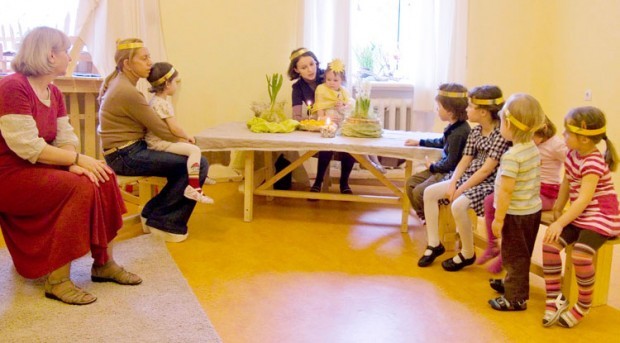
This education system aims to develop the abilities of each child and his self-confidence.
This technique does not accept early intelligent learning in any form - under 7 years of age it is prohibited to burden a child with tasks. Thus, children are taught to read only from the 3rd grade, and before school children play only with toys made from natural materials. The beginning of the active development of intelligence occurs at the moment when its emotional world is formed.
Specific schizophrenic disorders, as well as problems with attention deficit hyperactivity disorder, social dysfunction, behavioral disorders, anxiety, psychosis and mood disorders, organic symptoms and intellectual decline and chronic somatic diseases may have an impact. develop the child’s personality, determine the final form of personality, often leading to its disorder. Problems in early years, not necessarily disturbed, can be the herald of subsequent disturbances in all areas of adult functioning - cognitive, emotional, social, biological and sexual.
Much attention is paid to the comfort of learning. There is no competitive moment, no marks, small study groups no more than 20 people, so that everyone can be given attention.
The main emphasis in education is on artistic activity children, the development of their imagination.
This education system prohibits the use of televisions and computers, as children quickly develop addiction, which has a detrimental effect on the child’s spiritual and physical development.
Characteristic of this period is that even periodic disorders or problems, not very serious, can have much more serious consequences than adults, precisely because of constant development and learning. In children, symptoms and emotional problems are diagnosed by observing behavior. The child cannot perceive problems and identify them. They are exposed to action. This gives rise to special specific difficulties. For example, when a child who does not meet the specific demands and expectations of the parents may be subjected to negative assessment and diagnosed as needing the help of a psychologist or psychiatrist.
Child age:
Training is divided into three stages according to the age of the children:
- a child under 7 years old gains new knowledge and skills through imitation;
- from 7 to 14 years old feelings and emotions are connected;
- From the age of 14, children “turn on” logic.
Pros:
- development of independence;
- emphasis on developing creative abilities;
- psychological comfort of the child during early childhood.
Cons:
- lack of preparation for school;
- inability to adapt to the realities of modern times.
Glen Doman's technique (Doman cards) 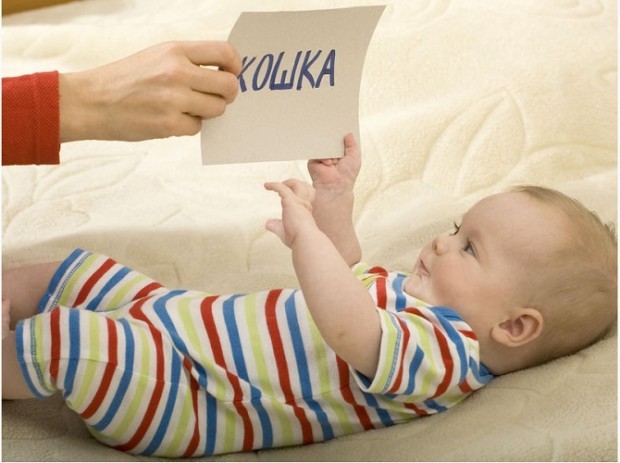
Glen Doman argued that development is effective only during the period of brain growth, that is, up to seven years.
In turn, the child's ability to exceed his ability to satisfy his parents' ambitions can trigger symptoms of the disorder. A child diagnosed with a psychotic disorder who is functioning beyond his or her ability to meet family expectations lives under constant stress, which in turn can cause relapse and increase the risk of further hospitalizations. Family problems with children can also be an “overtake” of normal developmental trends.
As already mentioned, the child does not see his difficulties from the point of view of a problem or symptom of a disease. An extreme example is a 27-year-old patient who was admitted to a psychiatric psychiatric clinic. During the interview, it turned out that the patient had chronic auditory hallucinations since the age of 12. When asked why she did not answer earlier and not tell her parents, she replied that she did not know that they were signs of illness, she thought that “everyone hears voices”, that this is a feature of every person.
The early learning program consists of four main areas: physical development, numeracy, reading and encyclopedic knowledge. Doman believed that children could easily memorize and systematize bare facts.
The didactic material in the Doman method is standard-sized cards. They write words, dots, mathematical examples, images of plants, animals, planets, architectural structures, etc. are glued. The cards are divided into thematic series. They are then shown to the child throughout the day. Over time, the program becomes more complex, and some information is reported about each object. new fact(where the animal lives, in what geological era the rock was formed, etc.).
The technique is designed to develop high intelligence in a child.
Child age:
Doman has developed a program of classes for children from birth to 6 years old.
Pros:
- intellectual development child due to the assimilation of a large amount of information;
- opportunity to study at home with mom.
Cons:
- the methodology does not provide for development fine motor skills, sensory, as well as such concepts as shape, size, size;
- Doman cards do not teach you to think logically, analyze phenomena, or draw conclusions, which means that the child does not develop creative and research abilities;
- Doman's cards do not provide for introducing the child to the facts that he comes into contact with in life, which are found in fairy tales, poems, songs, and games.
Nikolai Zaitsev's technique (Zaitsev's cubes) 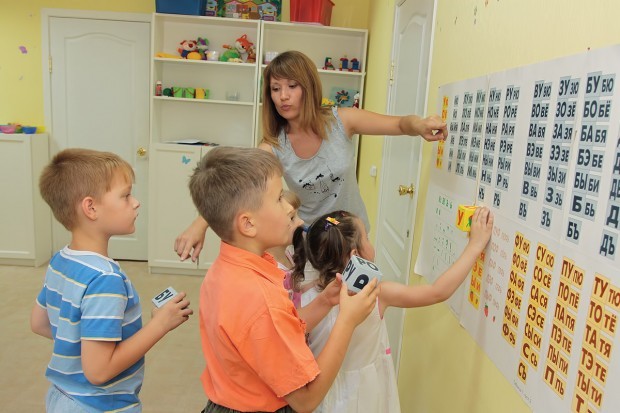
Nikolai Zaitsev has developed a set of manuals for teaching children reading, mathematics, writing and English language for home and preschool education.
The technique is based on the baby’s natural need for play, which has a positive effect on his health and brings only joy to the child.
The material is supplied systematically, but in game form, thanks to which the baby is involved in learning with pleasure. And it doesn’t matter - in a group or on your own.
A relaxed classroom environment is an indispensable condition for Nikolai Zaitsev’s early development methodology.
This means that instead of the usual sitting at desks, children can jump, make noise, move from tables to cubes, from cubes to a board, clap their hands and stomp their feet. All this is even encouraged. Because it is done with enthusiasm and passion. But this does not mean that the game is just entertainment, relaxation or exercise. Nikolay Zaitsev claims that the basis educational game constitute search and selection.
Child age: from the first year of life to 7 years.
Pros:
- quick learning to read in a playful way;
- development of intuitive literacy for life.
Cons:
- Speech therapists and defectologists say that children who have learned to read “according to Zaitsev” often “swallow” endings and cannot figure out the composition of a word (after all, they are used to dividing it exclusively into clauses and nothing else);
- children have to be retrained already in the first grade, when they begin to undergo phonemic analysis of a word, and the teacher asks to lay out the word on cards: a vowel sound - a red card, a voiced consonant - blue, a voiceless consonant - green; in Zaitsev’s method, sounds are indicated in completely different colors.
Methodology Cecile Lupan

The author took the Doman system as a basis, reworking and simplifying it. Cecile Lupan recommends talking to the baby from the very first minutes of life, without worrying that the baby does not understand something.
She is sure that knowledge precedes understanding. And what earlier child finds out, the sooner he will understand.
This is how the baby gets used to native speech, and previously meaningless sounds are filled with concrete meaning. When children begin to speak, they need to be taught to read. Each familiar word must be written in large letters on cards and placed near the objects that they represent. For example, “chair” is next to the chair, and “sofa” is next to the sofa.
This also applies to the account. First, the baby is introduced to the first ten, counting together with him any suitable objects. He will quickly remember the serial count and very soon discover the essence of this process.
A special place in the methodology is occupied by early physical education child.
Child age: from 3 months to 7 years.
Pros:
- the opportunity to study at home with mom;
- active stimulation of the child’s senses;
- comprehensive development of intelligence;
- attention is paid to the child’s emotions;
- the child communicates very closely with the parent during classes;
- The technique is based on the child’s interest in learning about the world around him.
Cons:
- is not suitable for all parents, due to the fact that it requires a lot of time and patience to work with the child;
- early diving, which is also given great attention in the methodology, raises doubts among some mothers.
Nikitin's technique
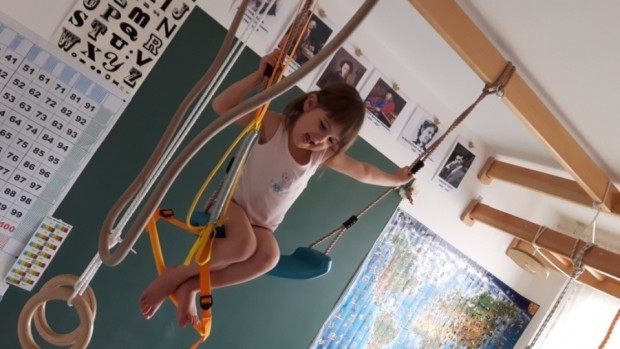
Back in Soviet times, the Nikitins showed how, from the birth of a child, to help him become an independent person. As soon as the baby has learned to crawl, his research activities cannot be limited by anything or anyone.
The Nikitin system is based, first of all, on labor, naturalness, closeness to nature and creativity. Children are masters of themselves, their actions and routines. Parents do not force them to do anything; they only help them understand complex life and philosophical problems. The technique contains methods of hardening and physical development.
In classes, children are given complete freedom of creativity - no special training, exercises, or lessons. Children exercise as much as they want, combining sports with other activities.
At home, an appropriate environment is also created: sports equipment is everywhere, included in the natural habitat along with furniture and other household items.
According to the authors of the methodology, parents should avoid two extremes in raising a child - “overorganization” and abandonment. Parents should be not indifferent to what and how their children are doing, to participate in children’s games, competitions, and in general – in the very lives of their children. But do not take on the role of a “supervisor.”
Parents need to create advanced conditions for development. For example, as soon as the child began to speak, the alphabet and abacus appeared in the toys.
The methodology is based on the NUVERS principle - the irreversible extinction of opportunities for effective development of abilities. It means that there is a certain time and conditions for the development of specific abilities, if they are not developed in time, they will be lost.
Child age: all periods of early childhood (from childbirth) to school years.
Pros:
- development of independence in the child;
- high intellectual development of the child;
- development of imaginative and logical thinking;
- developing a creative approach to problem solving;
- game form of education;
- mental and physical development of the child.
Cons:
- lack of perseverance in the child due to the fact that all classes are conducted solely according to his interest;
- lifestyle is difficult to maintain in urban conditions;
- extreme hardening methods.
Tyulenev's technique
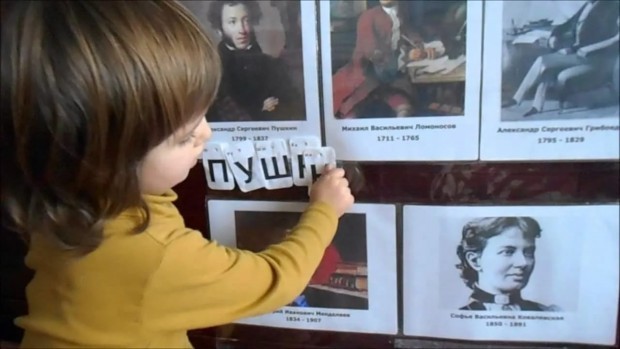
Tyulenev’s method does not ignore any of the areas of child development. Thanks to her, a child can be taught reading, music, mathematics, drawing, and develop sports and research talents.
Tyulenev believed that from the first weeks of a baby’s life it is important to provide him with as many sensory stimuli as possible, thereby forcing his brain to work.
In the first two months of a child’s life, you should show him lines, triangles, squares and others drawn on a piece of paper. geometric shapes.
Development should begin by examining one figure, gradually increasing their number. Over the next two months, the child’s field of vision should include pictures of animals, plants, letters of the alphabet, and mathematical symbols.
WITH four months you need to start playing “Toyball” - a child throwing cubes and other bright objects from the bed.
From five months you can place musical instruments next to your child. By touching them, the child randomly produces sounds that will help develop his musical abilities.
From the age of six months, start learning letters by looking at the magnetic alphabet with your child. At eight months, start playing with your child the game “Bring the letter”, and from ten months - the game “Show the letter”, then - “Name the letter/syllable/word”.
From the age of one and a half years, begin to teach the child to type on a typewriter, play chess, and at 2.5 years, introduce him to the periodic table.
Child age: from the first weeks of life to 6 years.
Pros:
- classes do not require much time from the parent;
- The classes are suitable for any child.
Cons:
- it is difficult to obtain didactic material;
- unconfirmed effectiveness of classes.
TRIZ method
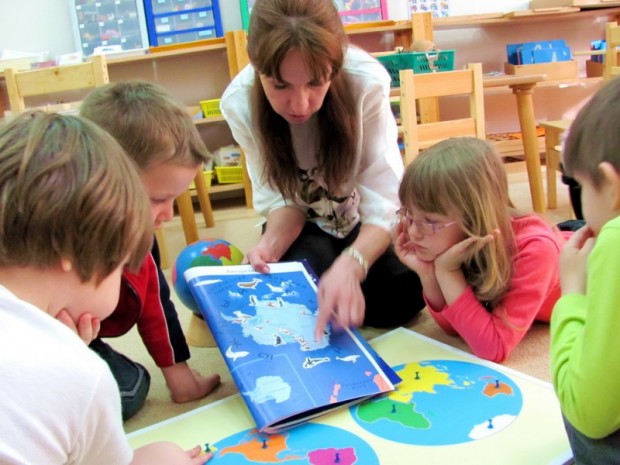
This is one of the new pedagogical technologies used in institutions additional education children.
TRIZ is a theory for solving inventive problems. It was developed by the Baku scientist and science fiction writer Heinrich Saulovich Altshuller.
The main idea of the theory is that technical solutions arise and develop not spontaneously, but according to certain laws, which can be known and used to consciously solve inventive problems without many empty trials.
It turned out that TRIZ can be used in working with children and gives amazing results in terms of developing the imagination, fantasy, and creativity of children.
Childhood is a period of vigorous imagination and an important period for the development of this valuable quality, and imagination is one of the most important qualities of a creative person.
The main goal of the methodology is the formation of creative thinking in children, that is, the education of a creative personality prepared to consistently solve non-standard problems in various fields of activity.
Pedagogical credo"TRIZ members" - every child is initially talented and even brilliant, but he must be taught to navigate modern world in order to achieve maximum effect at a minimum cost.
Training is carried out through classes, games, fairy tales, and various tests.
Classes to develop creative imagination include improvisation, play, and hoaxes. Here they teach you to come up with your own fairy tales, and not just one, but as many as there are people in the group and even more. Children recognize and learn to compare physical and natural phenomena, but in such a form when they do not notice that they are learning, but make discoveries for themselves every minute. Trizov classes on visual arts include the use of various non-standard materials. The principle of conducting classes is from simple to complex.
To stimulate the creative activity of children and eliminate the negative impact of psychological inertia, various methods and techniques are used, for example: brainstorming (sorting through resources and choosing the ideal solution), synectics (method of analogies), morphological analysis (identifying all possible facts for solving a problem) and others.
Child age: preschool (from 3 to 7 years).
Pros:
- development of creative imagination;
- acquired skill of thinking systematically, with a deep understanding of ongoing processes;
- development intellectual abilities child;
- development of skills of analysis, comparison, comparison.
Cons:
- The teacher and his competence play a major role in the child’s mastery of this technique;
- the presence of terminology that is difficult for a child’s mind.



